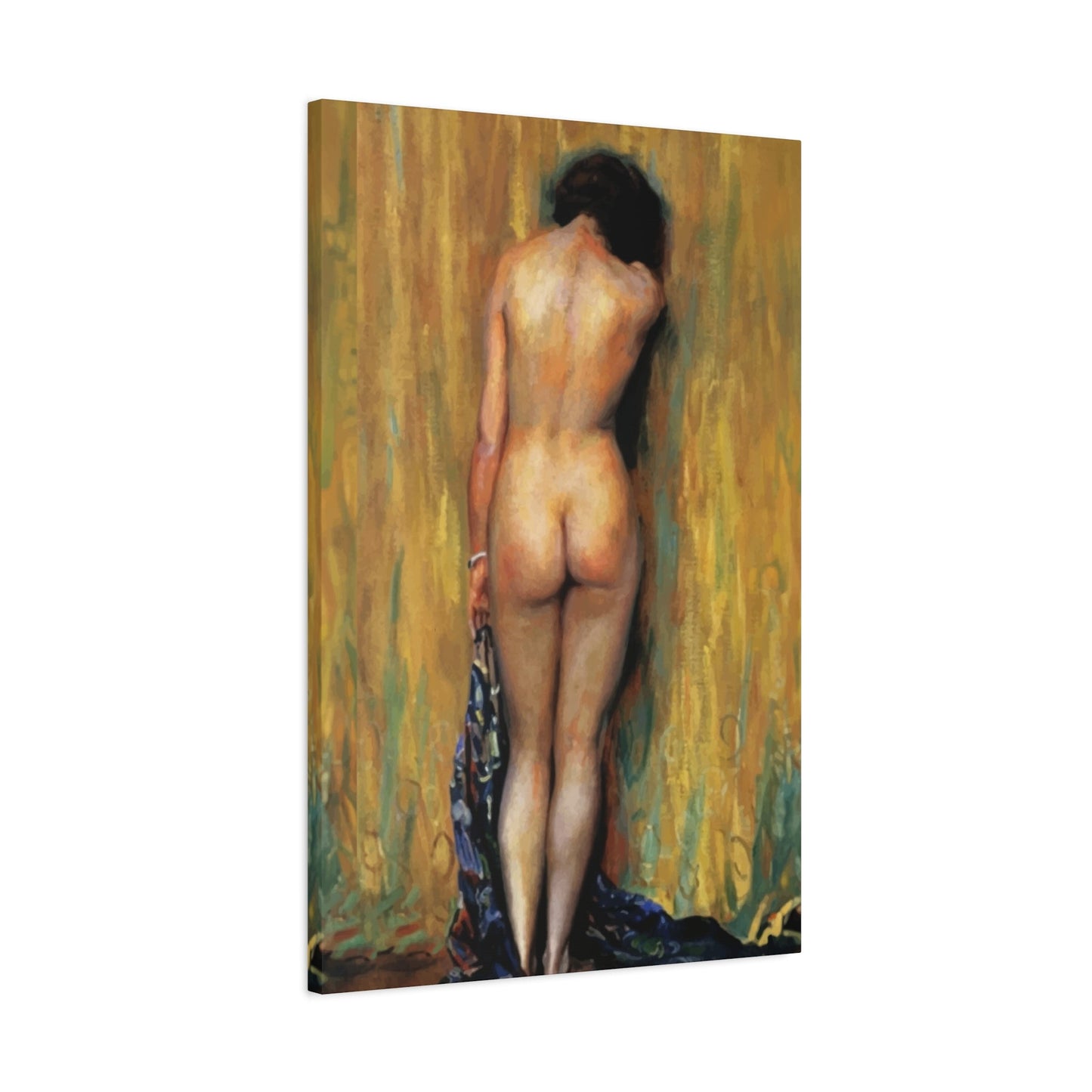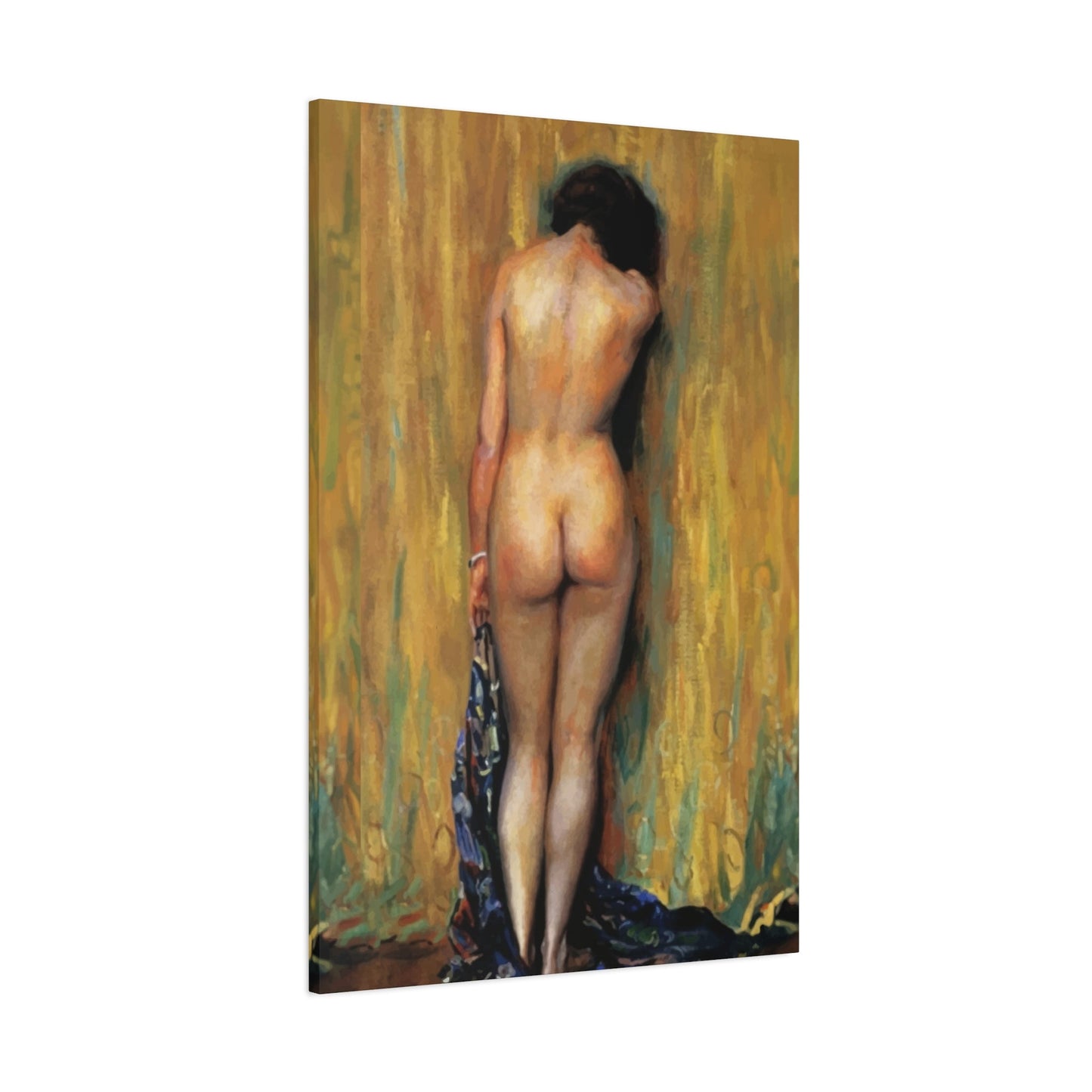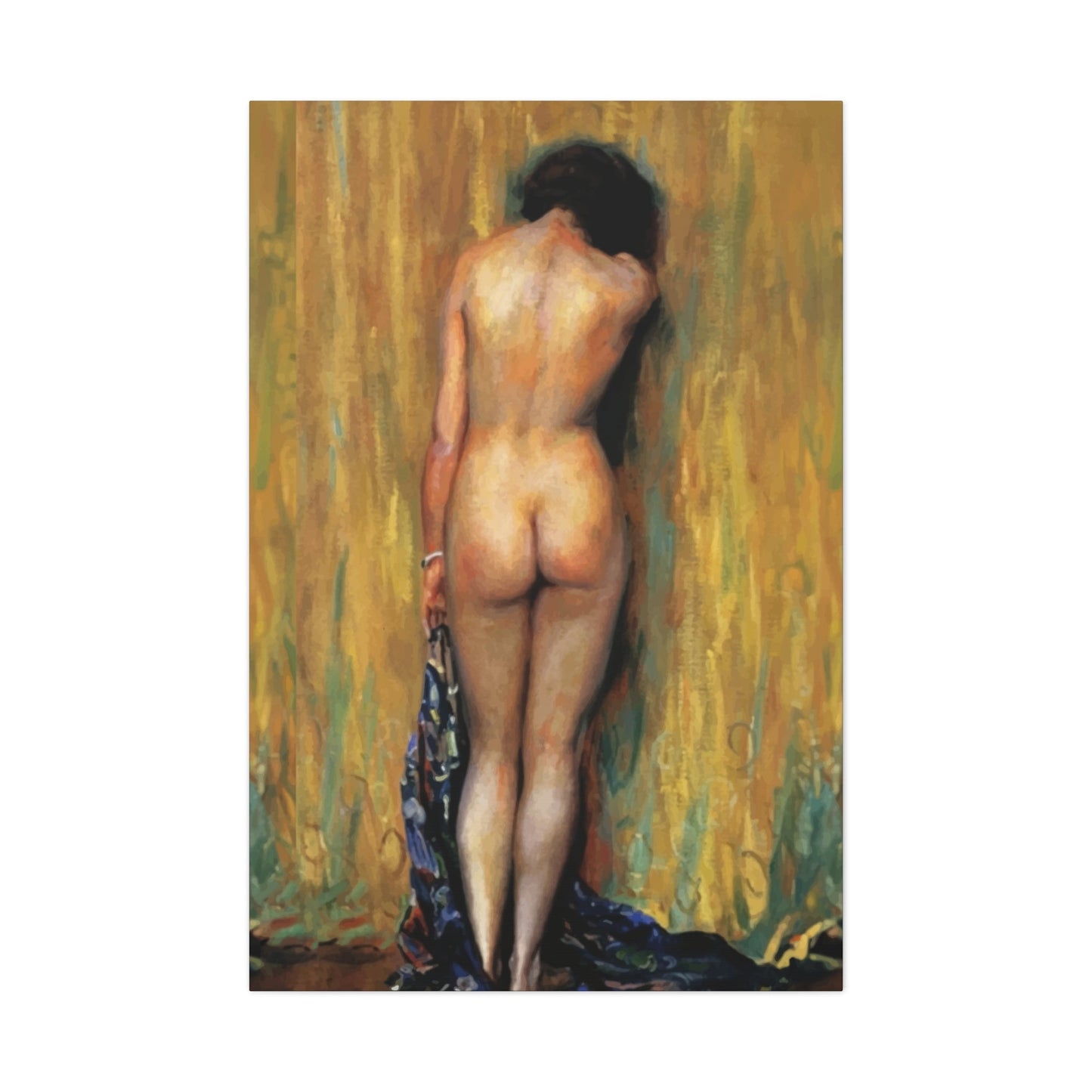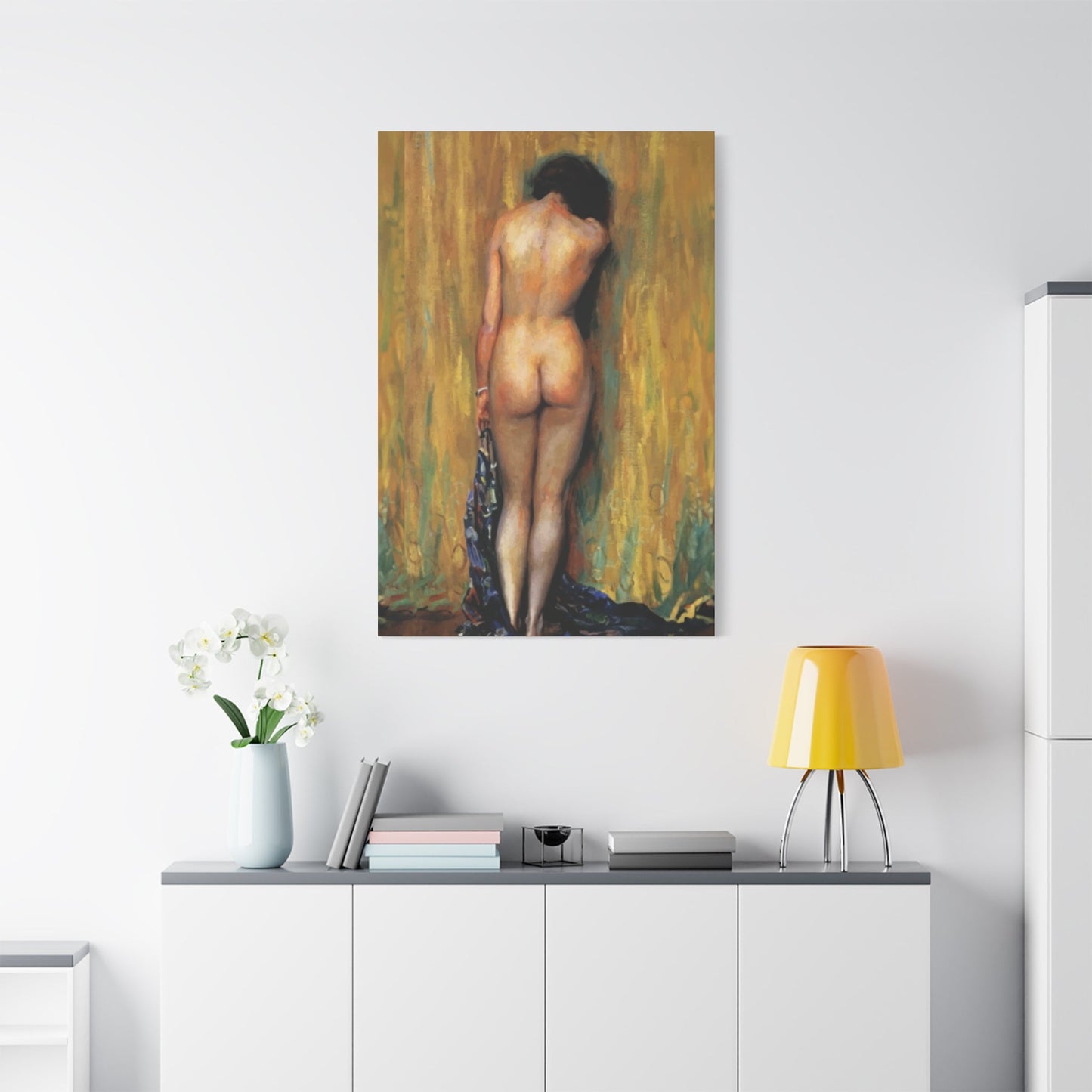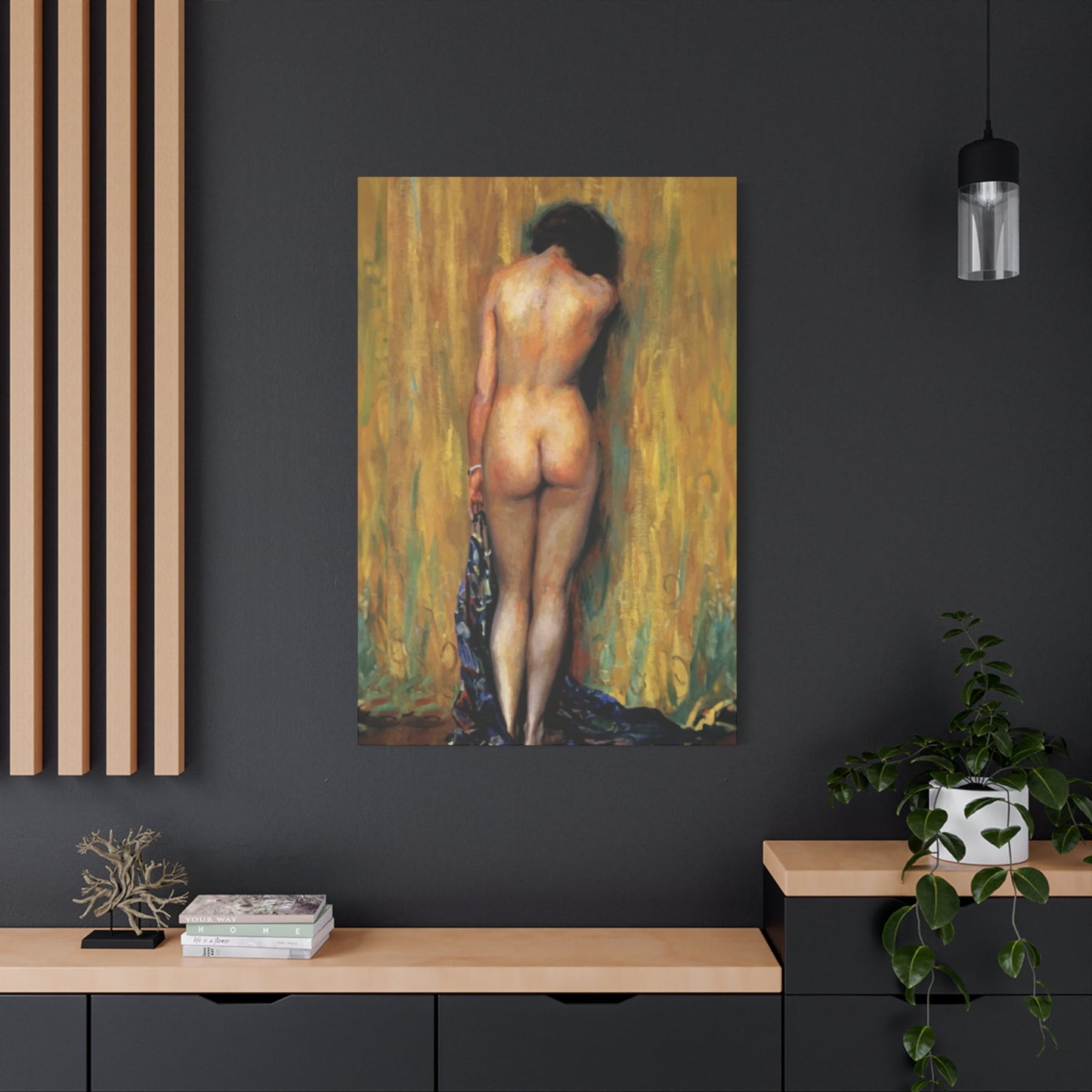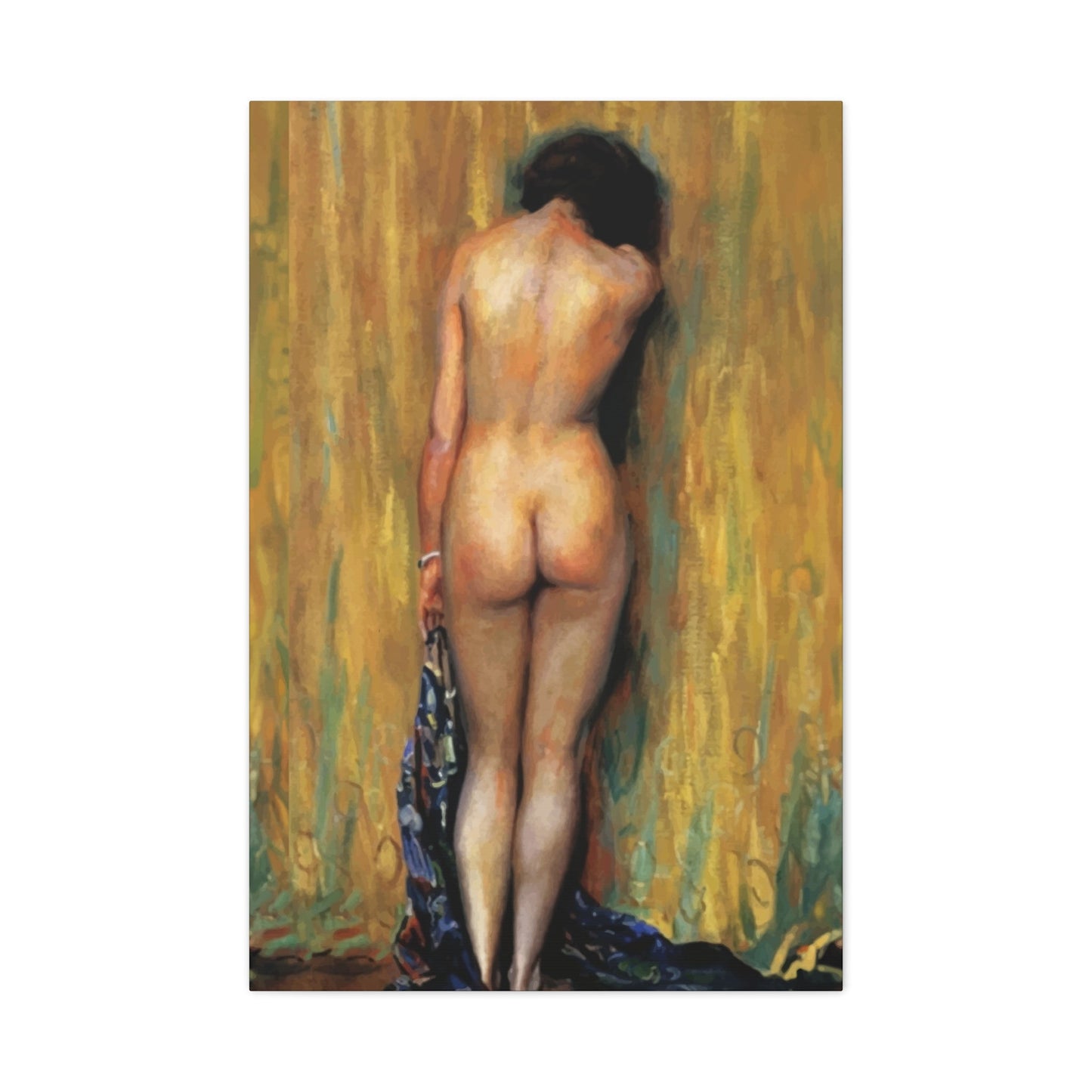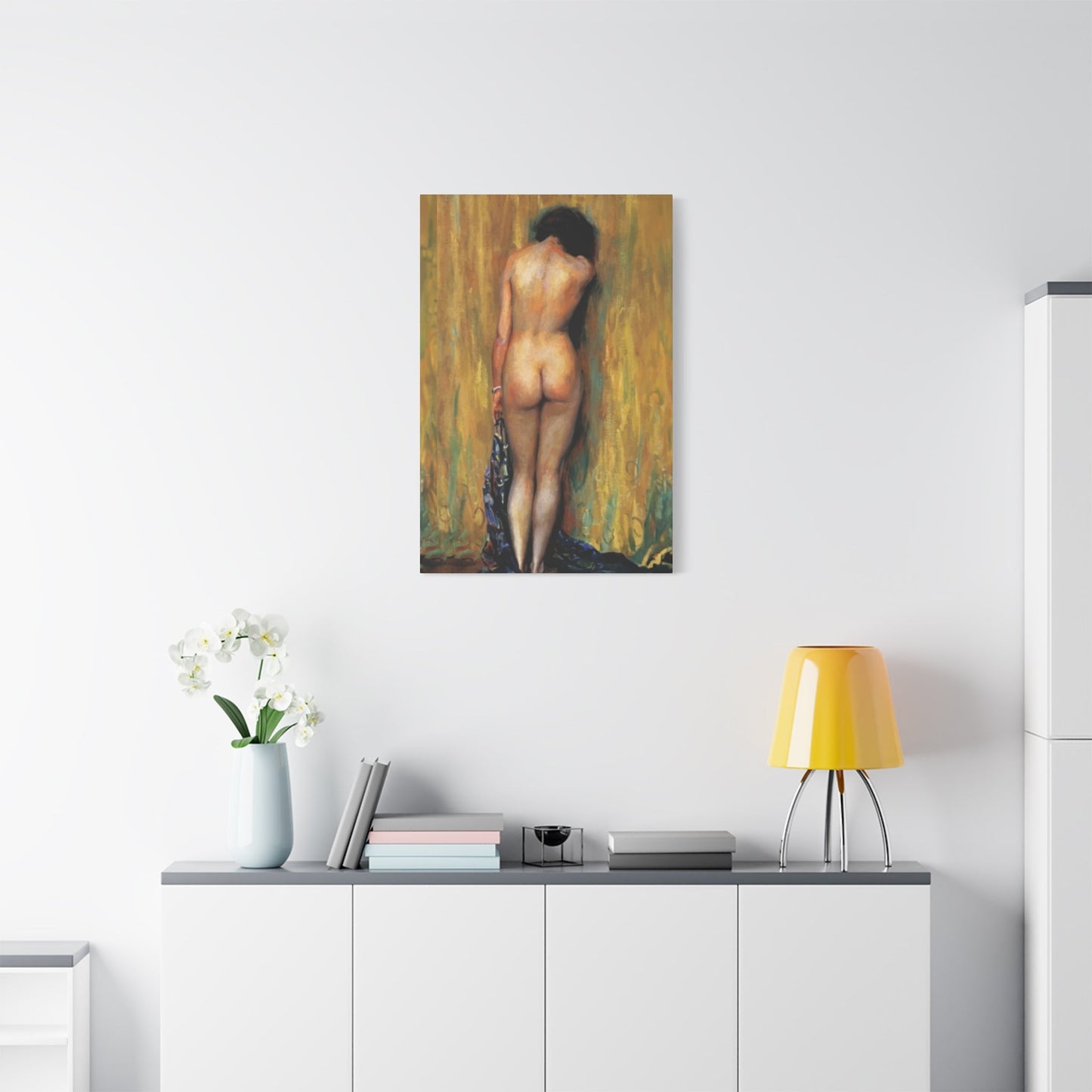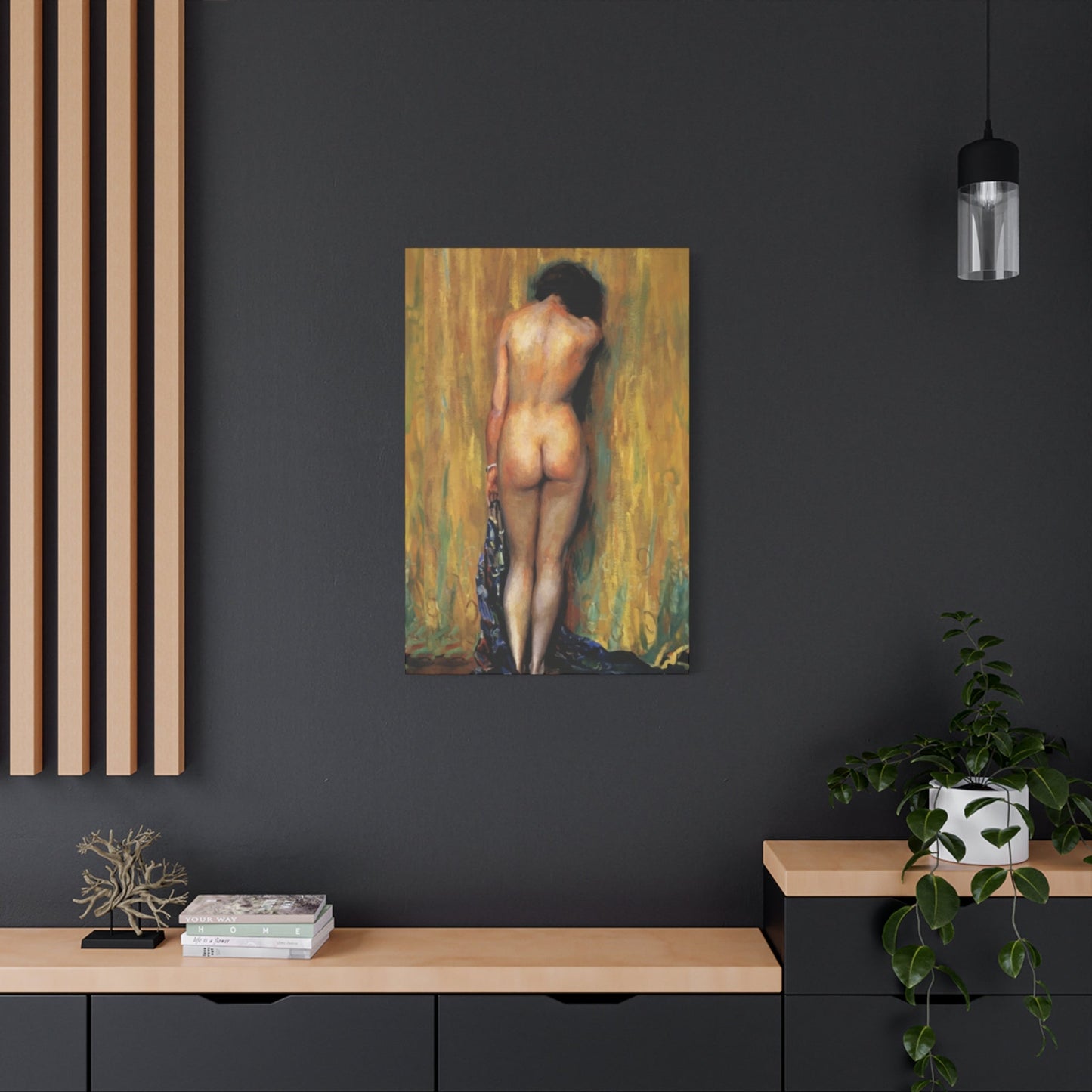Honoring the Female Spirit: A Journey Through Expressive Woman Wall Art
The world of feminine visual expression has evolved dramatically over recent decades, transforming how we celebrate, honor, and showcase the strength, beauty, and complexity of women through artistic representations displayed in our homes and workplaces. From bold contemporary pieces that challenge societal norms to delicate vintage portraits that whisper stories of bygone eras, the options available today allow anyone to curate a collection that resonates with their personal aesthetic and values. This comprehensive exploration delves into various styles, themes, and approaches to selecting and displaying artistic representations of women, offering insights into how these powerful visual statements can transform any environment while reflecting individual taste and cultural appreciation.
Whether you're drawn to fierce warrior depictions, serene minimalist silhouettes, vibrant abstract compositions, or historically significant vintage pieces, understanding the nuances of each style helps in making informed decisions that will bring lasting satisfaction. The journey through different artistic movements, cultural perspectives, and contemporary trends reveals how feminine imagery has been interpreted across time and geography, offering endless possibilities for personal expression. This guide serves as your roadmap through the diverse landscape of feminine artistic expression, helping you navigate choices that align with your vision while appreciating the deeper meanings and historical contexts that make each piece significant.
Finding Fierce and Feminine Portraits for Your Collection
The search for powerful feminine portraits begins with understanding what qualities resonate most deeply with your personal aesthetic and the message you want to convey through your chosen pieces. Fierce feminine imagery combines strength with grace, power with elegance, creating visual narratives that challenge traditional representations while celebrating the multifaceted nature of womanhood. These portraits often feature confident gazes, dynamic poses, and commanding compositions that demand attention and respect from viewers.
When seeking out these powerful pieces, consider the emotional impact you want to achieve in your environment. Fierce portraits work exceptionally well in areas where you need motivation and empowerment, such as home offices, workout areas, or entryways. The subjects in these pieces typically display characteristics like determination, resilience, and self-assurance, communicated through body language, facial expressions, and artistic styling choices. Look for artists who specialize in contemporary portraiture that emphasizes strength without sacrificing femininity, creating balanced representations that feel authentic rather than stereotypical.
The color palette in fierce feminine portraits often includes bold, saturated tones that command visual attention. Deep crimsons, rich purples, electric blues, and metallic golds frequently appear in these compositions, adding layers of meaning and emotional intensity. However, fierce doesn't always mean loud—some of the most powerful feminine portraits achieve their impact through restrained color schemes and subtle compositional choices that draw viewers into quiet contemplation of the subject's inner strength.
Composition plays a crucial role in conveying fierceness through portraiture. Artists might employ dramatic lighting, unconventional angles, or unexpected framing to create tension and energy within the piece. Close-up shots that focus on penetrating gazes or hands positioned in gestures of authority can communicate power effectively. Full-body compositions showing dynamic movement or commanding stances provide different but equally potent expressions of feminine strength.
The medium chosen for fierce feminine portraits significantly affects their overall impact. Oil paintings offer richness and depth, with layered textures that add complexity to the representation. Digital illustrations provide sharp, clean lines and the possibility for surreal elements that push beyond realistic constraints. Photography captures raw authenticity, preserving genuine moments of strength and determination. Mixed media approaches combine multiple techniques, creating pieces that challenge viewers to look closer and discover new details with each viewing.
Cultural context matters when selecting fierce feminine portraits. Different traditions and artistic movements interpret strength and femininity through varied lenses, offering diverse perspectives worth exploring. African tribal art might emphasize communal strength and ancestral wisdom, while Asian artistic traditions could highlight grace combined with martial prowess. Latin American feminist art often incorporates vibrant colors and political messaging, creating pieces that are both visually stunning and socially conscious.
Authentication and artist background should factor into your selection process, especially when investing in higher-priced pieces. Research the artist's body of work, their artistic journey, and their reputation within the art community. Understanding an artist's perspective and intentionality adds depth to your appreciation of the piece and ensures you're supporting creators whose values align with your own. Many contemporary artists share their creative process through social media and websites, offering transparency that helps buyers make informed decisions.
Framing choices can enhance or diminish the fierce quality of feminine portraits. Bold, substantial frames in materials like dark wood, brushed metal, or matte black acrylic complement the strength of the subject matter. Alternatively, minimal framing or floating mount techniques allow the artwork itself to dominate without distraction. Consider how the frame interacts with both the artwork and the surrounding environment to create a cohesive visual statement.
Placement strategy amplifies the impact of fierce feminine portraits. These pieces deserve positions of prominence where they'll be frequently seen and appreciated. Above a fireplace mantel, as a focal point in a main living area, or commanding attention in a hallway creates opportunities for the artwork to fulfill its purpose of inspiring and empowering. Avoid tucking these powerful images into corners or secondary locations where their impact would be diminished.
Lighting transforms how fierce feminine portraits are perceived and experienced. Natural light brings out subtle color variations and creates changing moods throughout the day, while directed artificial lighting can highlight specific elements and create dramatic shadows that enhance the overall composition. Picture lights mounted directly above the piece ensure it remains visible and impactful even in low-light conditions. Adjustable track lighting offers flexibility to modify the presentation based on time of day or specific events.
Cool Abstract Art Featuring Feminine Forms and Concepts
Abstract representations of femininity open entirely new dimensions for artistic expression, moving beyond literal portraiture into realms of interpretation, emotion, and conceptual exploration. These pieces invite viewers to engage actively with the artwork, bringing their own experiences and perspectives to complete the meaning. Abstract feminine art can range from pieces with clearly recognizable feminine forms rendered in non-realistic ways to completely non-representational works that evoke feminine energy through color, line, and composition.
The beauty of abstract feminine art lies in its versatility and the creative freedom it offers both artists and collectors. Without the constraints of realistic representation, artists can focus on conveying the essence, spirit, or concept of femininity rather than specific physical attributes. This approach often results in pieces that feel more universal, speaking to broader themes of identity, emotion, and human experience while still maintaining distinctly feminine qualities.
Color theory becomes particularly important in abstract feminine art, as hues carry emotional weight and cultural associations that communicate meaning without literal imagery. Soft pastels might evoke traditional concepts of femininity, while vibrant magentas, deep teals, and rich oranges challenge those conventions and express contemporary feminine power. Metallic accents in gold, copper, or rose gold add layers of sophistication and luxury, creating pieces that feel both modern and timeless.
Geometric abstraction offers one popular approach to representing femininity through non-literal means. Circles and curves suggest softness and fluidity traditionally associated with feminine energy, while sharp angles and bold lines introduce elements of strength and modernity. Artists might deconstruct feminine forms into their basic geometric components, then reassemble them in unexpected ways that challenge viewers to reconsider their assumptions about feminine representation.
Fluid, organic abstractions using techniques like pour painting, watercolor bleeding, or ink washing create pieces that embody movement and transformation. These approaches often result in artwork that feels alive, capturing something essential about the constantly evolving nature of identity and experience. The unpredictability inherent in these techniques mirrors the complexity and multifaceted nature of femininity itself, producing unique pieces that could never be exactly replicated.
Textural elements add depth and interest to abstract feminine art, inviting viewers to imagine how the piece would feel if touched. Heavy impasto techniques create raised surfaces that cast shadows and catch light, adding dimension to flat canvases. Mixed media incorporating fabric, paper, or found objects introduces unexpected elements that expand the conversation beyond paint alone. These tactile qualities make abstract art feel more tangible and approachable despite its non-representational nature.
Scale considerations affect how abstract feminine art functions within a environment. Large-scale abstracts make bold statements and can anchor entire rooms, serving as conversation starters and focal points. Medium-sized pieces work well in more intimate settings or as part of gallery wall arrangements. Smaller abstracts offer opportunities for personal connection in private areas like bedrooms or reading nooks, where contemplation feels more natural.
The relationship between positive and negative composition creates rhythm and balance in abstract feminine art. Artists manipulate these elements to guide the viewer's eye through the composition, creating pathways that lead to discovery and revelation. Negative portions provide rest and breathing room, preventing visual overwhelm and allowing the more active elements to shine. This dance between filled and empty portions mirrors the balance between action and reflection that characterizes human experience.
Symbolism in abstract feminine art operates on both conscious and subconscious levels. While the artwork may not depict literal objects or figures, artists incorporate shapes, patterns, and compositional choices that carry meaning. Spirals might represent growth and evolution, overlapping forms could suggest community and connection, while fragmented elements might explore themes of identity and reconstruction. Understanding these symbolic languages enriches appreciation and personal connection to abstract pieces.
Contemporary abstract artists pushing boundaries in feminine representation deserve attention and support. Emerging creators bring fresh perspectives shaped by current social conversations, technological possibilities, and evolving understandings of gender and identity. Following these artists through galleries, art fairs, and online platforms provides opportunities to acquire pieces before they become widely recognized, often at more accessible price points while supporting the next generation of artistic innovation.
Pairing abstract feminine art with other decorative elements requires thoughtful consideration to avoid visual competition. Because abstracts often contain complex color palettes and dynamic compositions, surrounding furniture and accessories should generally take supporting roles. Neutral backgrounds allow the artwork to dominate, while carefully chosen accent pieces in complementary colors create harmonious relationships without overwhelming the primary focus.
Investment potential of abstract feminine art has grown substantially as collectors increasingly value pieces that resist easy categorization and offer lasting intrigue. Unlike trend-dependent representational work that may feel dated as styles change, quality abstracts often maintain relevance across decades. When selecting pieces with investment potential in mind, consider the artist's trajectory, the technical quality of execution, and the conceptual depth underlying the work.
How to Pick Artistic Representations That Speak to Your Personal Aesthetic
Selecting meaningful artistic pieces requires moving beyond surface-level attraction to deeper consideration of how particular works resonate with your values, experiences, and vision for your living environment. The process involves both emotional response and intellectual evaluation, balancing gut reactions with practical considerations to ensure long-term satisfaction with your choices. Developing confidence in your selection abilities comes through education, exposure to diverse styles, and honest reflection on what truly moves you.
Begin by examining your immediate emotional response when encountering potential pieces. Authentic connection often manifests as a physical sensation—a quickening pulse, a catch in your breath, or a feeling of recognition that transcends rational explanation. These visceral reactions provide valuable information about what speaks to you on a fundamental level. However, initial attraction should be just the starting point rather than the sole criterion for selection.
Consider how potential pieces align with your existing aesthetic preferences and lifestyle. If you gravitate toward minimalist, uncluttered environments, a busy, detailed piece might create visual dissonance no matter how much you admire it in isolation. Conversely, if your home celebrates maximalism and eclectic energy, a stark, simple composition might feel out of place. Successful integration requires honoring both the artwork's inherent character and your established environmental tone.
Color relationships between potential artwork and existing elements in your environment deserve careful attention. While matching colors exactly creates harmonious but potentially boring results, incorporating complementary or analogous colors from your current palette ensures the piece will feel connected rather than jarring. Alternatively, deliberately introducing contrast through a piece in an entirely different color family can create dynamic tension that energizes a room, provided the contrast feels intentional rather than accidental.
Subject matter significance varies widely between individuals based on personal history, cultural background, and current life circumstances. What feels empowering to one person might feel uncomfortable to another, and these responses are equally valid. Reflect honestly on whether particular representations align with how you see yourself or aspire to be seen. Artwork that challenges you to grow differs from work that creates ongoing discomfort—understanding this distinction helps avoid purchases that ultimately don't serve you well.
Quality assessment requires developing a basic understanding of artistic techniques and materials. Even without formal art training, you can learn to evaluate factors like color application, compositional balance, and technical execution. Higher quality pieces generally display confident brushwork or precise rendering, intentional rather than accidental effects, and cohesive overall vision. These qualities often justify higher price points and tend to provide lasting satisfaction as opposed to trendy pieces that lose appeal quickly.
Artist research enriches the selection process and often deepens appreciation for potential purchases. Learning about an artist's background, influences, and creative philosophy adds layers of meaning to their work. Many collectors find that understanding the story behind a piece creates stronger emotional connections and increases long-term satisfaction. Additionally, researching an artist's career trajectory and reputation provides insight into investment potential for those concerned with the financial aspect of collecting.
Budget realities must factor into selection decisions without compromising artistic integrity. Excellent pieces exist across all price ranges, from emerging artists offering original works at accessible prices to high-quality prints of established works. Rather than stretching beyond comfortable limits for a single piece, consider building a collection gradually, adding pieces as budget allows while maintaining quality standards. This approach often results in more satisfying collections that reflect genuine choices rather than compromises.
Authenticity verification protects your investment and ensures you're acquiring legitimate pieces. For original works, seek documentation including certificates of authenticity, provenance information, and artist signatures. When purchasing prints, verify edition numbers and understand whether you're buying limited or open editions. Reputable sellers provide transparent information about these details and willingly answer questions about authentication.
Trial visualization helps prevent costly mistakes when selecting pieces for specific locations. Many sellers allow returns or exchanges, but whenever possible, use visualization techniques before purchasing. Take photos of your intended display area and use apps that allow you to virtually place artwork in those settings. Consider dimensions carefully, as pieces often appear different sizes in galleries versus residential environments. Creating scale mockups using paper or cardboard helps ensure appropriate sizing before committing to purchases.
Trust development in your own taste takes time and exposure but ultimately proves invaluable. Visit galleries, museums, and art fairs regularly to broaden your visual vocabulary. Notice patterns in what consistently attracts your attention across different venues and occasions. Read about art history and contemporary movements to understand context and influences. As your knowledge grows, confidence in your selections increases, making the process more enjoyable and resulting in choices that truly reflect your evolving aesthetic sensibility.
Long-term versatility should influence selection, especially for significant investments. While trend-driven pieces might feel exciting in the moment, classic approaches to feminine representation tend to maintain relevance across changing styles. Timeless doesn't mean boring—many contemporary artists create innovative works that honor artistic traditions while pushing boundaries in fresh ways. Pieces with this quality adapt as your tastes evolve and remain compelling through different life stages.
Personal meaning often trumps objective artistic merit when building meaningful collections. A piece by an unknown artist that commemorates an important life experience or connects to cherished memories may bring more satisfaction than a technically superior work by a famous name. Honor these personal connections while also maintaining quality standards that ensure your collection as a whole reflects both heart and discernment.
The Magic of Minimalist Feminine Silhouettes in Contemporary Design
Minimalist feminine silhouettes represent the art of saying more with less, distilling the complexity of feminine form and energy into their most essential elements. These pieces demonstrate the power of restraint, using simple lines, limited color palettes, and negative composition to create striking visual statements that feel both modern and timeless. The minimalist approach strips away extraneous detail, forcing both artist and viewer to focus on fundamental qualities that define feminine representation.
Line quality becomes paramount in minimalist silhouettes, as each stroke carries significant weight in the overall composition. Artists working in this style demonstrate masterful control, creating curves that flow with apparent effortlessness while conveying grace, strength, or sensuality through subtle variations in weight and direction. A single continuous line might trace the entire outline of a figure, requiring viewers to complete the image mentally, actively engaging with the artwork in ways that more detailed pieces don't demand.
Negative portions in minimalist feminine silhouettes often occupy more canvas than the actual figure, a reversal of traditional portraiture that emphasizes emptiness as much as presence. This generous use of unmarked canvas or wall creates breathing room and contemplative atmosphere, making these pieces particularly effective in environments where calm and clarity are priorities. The emptiness doesn't read as lack but rather as intentional restraint that amplifies the impact of what is shown.
Color minimalism in these pieces typically involves limited palettes—sometimes monochromatic, often just two or three carefully chosen hues. Black on white offers classic simplicity with maximum contrast, while variations like charcoal on cream or navy on blush provide subtle sophistication. Some contemporary minimalist artists introduce single accent colors, perhaps a touch of gold or copper, that draws the eye and adds unexpected richness without violating minimalist principles.
The philosophy underlying minimalist feminine art often reflects broader cultural movements toward simplification, mindfulness, and intentional living. These pieces align aesthetically with lifestyle approaches that prioritize quality over quantity, essential over excessive, and meaning over accumulation. Collectors drawn to minimalist silhouettes frequently share values around sustainability, intentionality, and appreciation for craftsmanship—seeing their art selections as extensions of broader life philosophies.
Scale plays differently in minimalist works compared to more detailed pieces. A large minimalist silhouette might feature just a few lines on an expansive canvas, creating dramatic impact through the relationship between mark and void. Conversely, small minimalist pieces concentrate their power, becoming jewel-like focal points that reward close attention. Understanding how scale affects minimalist work helps in selecting appropriate sizes for intended locations and desired effects.
Versatility makes minimalist feminine silhouettes particularly practical for collectors with evolving aesthetics or changing living situations. These pieces adapt easily to different environments and complement various design styles without clashing. A minimalist silhouette that works beautifully in a contemporary loft transitions equally well to a renovated historic home or a modern suburban dwelling, making these pieces sound investments for those whose circumstances might change over time.
Gender representation in minimalist feminine silhouettes often becomes more fluid and interpretive than in detailed portraits. By reducing forms to their essential lines, artists create pieces that might represent specific individuals or universal feminine archetypes. This ambiguity allows viewers to project their own interpretations and experiences onto the work, creating personal connections that feel unique even when viewing widely reproduced pieces.
Matting and framing minimalist silhouettes requires special consideration to maintain the integrity of the minimalist aesthetic. Generous matting extends the negative around the artwork, preventing visual crowding and preserving the breath that makes minimalism effective. Frame choices should support rather than compete with the piece—thin, simple profiles in materials that complement rather than distract work best. Some collectors choose to mount minimalist pieces without frames at all, allowing the artwork to float directly against the wall.
Layering minimalist pieces creates interesting possibilities for those wanting to incorporate multiple works without overwhelming environments. Because each individual piece maintains simplicity, several can coexist in the same viewing area without creating visual chaos. Careful arrangement that maintains breathing room between pieces and considers how the silhouettes interact creates cohesive groupings that amplify rather than diminish individual impact.
Historical precedents for minimalist feminine representation extend back through various artistic movements and cultural traditions. Ancient Greek pottery featured simplified female figures rendered with economy of line, while Asian brush painting traditions emphasized capturing essence over detail. Understanding these historical connections adds depth to appreciation of contemporary minimalist work and reveals how this approach represents continuation of time-honored artistic principles rather than purely modern invention.
Meditation and contemplation find natural partners in minimalist feminine silhouettes. The simplicity of these pieces makes them ideal for environments dedicated to reflection, yoga, or other mindfulness practices. Unlike busy, detailed artwork that stimulates mental activity, minimalist pieces support the quieting of mental chatter and encourage the focused attention central to contemplative practices.
Vintage Vibes: Old-School Portraits Celebrating Feminine Heritage
Vintage feminine portraits transport viewers to earlier eras, offering windows into historical aesthetics, cultural values, and evolving representations of femininity across time. These pieces range from genuine antiques created during the periods they represent to contemporary works deliberately styled to evoke vintage character. The appeal of vintage feminine imagery lies partly in nostalgia but also in appreciation for the technical mastery, artistic conventions, and storytelling approaches that characterized different historical periods.
Authentic antique portraits from the nineteenth and early twentieth centuries carry both artistic and historical significance. These pieces document actual individuals who lived during their creation periods, preserving faces, fashions, and attitudes that might otherwise be lost to time. When purchasing genuine antiques, research provenance carefully and consult experts to verify authenticity and condition. Well-preserved antique portraits represent tangible connections to the past and often appreciate in value as historical artifacts.
Reproduction vintage pieces offer accessibility to those who appreciate historical aesthetics but lack budgets or desire for genuine antiques. High-quality reproductions capture the character of vintage work while being available at fraction of costs for originals. Digital printing technologies now enable reproductions that closely match the appearance of aged originals, complete with texture and color variations that replicate patina and wear. These pieces provide vintage atmosphere without concerns about preservation and handling that accompany genuinely old artwork.
Different historical periods offer distinct aesthetic approaches to feminine portraiture, each reflecting the cultural values and artistic movements of its time. Victorian-era portraits typically feature formal poses, elaborate clothing, and romanticized presentations that emphasized refinement and propriety. Art Nouveau pieces from the turn of the twentieth century showcase flowing lines, decorative elements, and stylized representations that celebrate natural forms and feminine grace. Mid-century portraits might display the bold graphics, vibrant colors, and modernist sensibilities characteristic of that dynamic era.
Photography transformed feminine portraiture from the mid-nineteenth century forward, introducing new possibilities for capturing authentic likenesses and unguarded moments. Early photographic portraits carry distinctive character from the limitations and quirks of vintage cameras, lighting equipment, and developing processes. Sepia tones, soft focus, formal studio backdrops, and the solemn expressions necessary for long exposure times create unmistakable vintage character. Collecting vintage photographic portraits allows appreciation for the technical evolution of the medium alongside the artistic and cultural insights these images provide.
Fashion history becomes vividly apparent through vintage feminine portraits, as clothing, hairstyles, and accessories anchor pieces to specific eras and cultural contexts. These details provide valuable information about social status, personal identity, and aesthetic preferences of represented subjects. Fashion enthusiasts often collect vintage portraits partly for the detailed views they provide of historical garments, using these images as reference for understanding construction techniques, fabric choices, and styling approaches from earlier periods.
Cultural diversity in vintage feminine portraiture remains disappointingly limited in many collections, reflecting historical biases about whose images deserved preservation and celebration. However, dedicated collectors and researchers have uncovered rich traditions of feminine portraiture across various cultures and communities. Seeking out these underrepresented traditions provides more complete understanding of historical feminine representation while supporting contemporary efforts to recover and honor overlooked artistic heritage.
Restoration considerations become important when acquiring genuinely old portraits. Depending on age and storage conditions, vintage pieces may show damage from light exposure, humidity, insect activity, or physical trauma. Professional restoration can revive damaged pieces but requires specialized expertise to avoid causing additional harm. When evaluating vintage works, balance appreciation for authentic patina that adds character against damage that threatens the piece's integrity or readability.
Modern artists creating vintage-styled feminine portraits bring contemporary perspectives to historical aesthetics, often with subtle subversions that comment on historical gender roles or artistic conventions. These pieces might feature period-appropriate styling but with knowing expressions or poses that suggest modern consciousness, creating interesting tensions between form and content. Contemporary vintage-styled work offers fresh takes on familiar themes while honoring traditional techniques and aesthetic principles.
Display strategies for vintage feminine portraits should honor their historical character while integrating them successfully into contemporary environments. Grouping multiple vintage pieces from similar eras creates immersive vignettes that transport viewers to specific historical moments. Alternatively, mixing vintage portraits with clearly modern pieces creates dialogue between past and present, highlighting continuities and changes in how femininity is represented across time.
Authentication challenges with vintage portraits require vigilance, as the market includes both honest reproductions clearly marked as such and deliberate forgeries intended to deceive. Developing relationships with reputable dealers who guarantee authenticity protects collectors from fraud. Learning to recognize characteristics of different printing and painting techniques from various eras helps identify inconsistencies that might indicate reproductions or forgeries. When significant sums are involved, professional appraisal provides additional security.
Preservation best practices extend the life of vintage feminine portraits and maintain their value for future generations. Avoid direct sunlight that fades pigments and damages paper or canvas. Maintain stable temperature and humidity levels to prevent warping, mold growth, or material deterioration. Use archival framing materials that won't introduce acids or other chemicals that accelerate aging. Handle pieces minimally and carefully, always with clean, dry hands or cotton gloves. These simple measures dramatically extend the lifespan of valuable vintage works.
Bright, Bold, and Beautiful: Colorful Artistic Celebrations
Vibrant, saturated color in feminine artistic representations breaks free from subtle restraint, embracing boldness that demands attention and celebrates the joy, power, and complexity that characterize contemporary feminine expression. These pieces energize environments with their visual impact, often incorporating multiple hues in dynamic relationships that create movement and excitement. The bold color approach reflects confidence, refusing to blend into backgrounds or accept secondary status in visual hierarchies.
Color psychology informs how different hues affect mood and energy in environments, making palette selection important beyond aesthetic preferences. Warm colors like reds, oranges, and yellows create excitement, warmth, and stimulation, working well in social areas where energy and conversation are desired. Cool blues, greens, and purples tend toward calming, contemplative effects suitable for private retreats or meditation areas. Bold multi-color pieces combine various psychological effects, creating complex emotional impacts that shift with viewing angles and lighting conditions.
Cultural color symbolism varies dramatically across different traditions, adding layers of meaning to colorful feminine representations. While white symbolizes purity in Western traditions, it represents mourning in some Eastern cultures. Red carries associations with luck and celebration in Chinese tradition but might signify passion or warning in Western contexts. Artists drawing from specific cultural traditions often employ color in ways that carry deep symbolic significance, rewarding viewers who understand these references while remaining visually striking for those who don't.
Complementary color schemes create visual vibration and maximum contrast by pairing hues opposite each other on the color wheel—purple with yellow, blue with orange, red with green. This approach produces dynamic, high-energy pieces that capture and hold attention. Artists use complementary relationships to emphasize particular elements, guide viewer attention, and create optical effects that make flat surfaces appear to advance or recede. Feminine representations employing complementary schemes often feel contemporary and bold.
Analogous color schemes use hues adjacent on the color wheel, creating harmonious, cohesive pieces with subtle color transitions. These schemes might range across cool tones from blue through purple or warm tones from yellow through red. The harmony of analogous colors creates visual comfort and unity while still allowing for vibrancy when saturated versions are used. Feminine imagery using analogous color schemes often feels more organic and flowing than sharply contrasting alternatives.
Triadic color schemes employ three hues evenly distributed around the color wheel, such as the primary colors red, yellow, and blue, or secondary colors orange, green, and purple. This approach offers vibrancy and variety while maintaining balance that prevents any single color from dominating. Contemporary feminine representations often use triadic schemes to create playful, youthful energy or to reference pop art traditions that elevated everyday imagery through bold color choices.
Gradient and ombre effects add dimension to colorful feminine representations, creating smooth transitions between hues that suggest movement, atmosphere, or transformation. These techniques work particularly effectively in abstract or semi-abstract pieces where literal representation matters less than emotional impact and visual interest. Digital artists often employ gradients extensively, while traditional painters achieve similar effects through careful blending and layering techniques. The flowing quality of color gradients pairs naturally with themes of feminine fluidity and evolution.
Neon and fluorescent colors push brightness to extreme levels, creating pieces that seem to glow with internal light. These intense hues reference both natural phenomena like bioluminescence and artificial elements like urban signage. Feminine representations employing neon colors often feel edgy, modern, and urban, connecting to nightlife, contemporary music culture, and digital aesthetics. These bold choices make powerful statements but require careful consideration of surrounding environments to avoid overwhelming visual competition.
Color blocking divides compositions into distinct areas of solid, unmodulated color, creating graphic, impactful designs that read clearly even from a distance. This approach has roots in modernist painting traditions and continues in contemporary design across multiple mediums. Feminine imagery using color blocking often feels fresh and current, with clean edges and bold shapes that translate well to various scales and applications. The technique works particularly effectively for large-scale pieces intended for substantial wall coverage.
Metallic colors including golds, silvers, coppers, and bronzes add luxury and light-reflective qualities to colorful feminine representations. These special hues change appearance based on viewing angles and lighting conditions, adding dynamism that purely matte colors cannot achieve. Contemporary artists often combine metallics with traditional colors, using them for highlights, accents, or entire compositional elements. The reflective quality of metallics creates particular challenges for photography, meaning pieces often appear even more impressive in person than in reproductions.
Pattern integration amplifies color impact in feminine artistic representations. Repeated motifs in contrasting hues create visual rhythm and movement that guides viewer attention through compositions. Patterns might reference textiles, natural forms, or pure geometry, each bringing different cultural associations and aesthetic effects. The combination of bold color with pattern creates maximum visual complexity and interest, producing pieces that reward repeated viewing with new details and relationships to discover.
Environmental integration of boldly colored feminine pieces requires balancing their visual power with surrounding elements. These statement works typically function best as primary focal points in their locations, with other decorative elements taking supporting roles. Neutral walls, furniture, and accessories allow bold artwork to dominate without visual competition. Alternatively, deliberately matching one or two accent colors from the artwork in surrounding elements creates cohesive relationships that feel intentional rather than coincidental.
Celebrating Diversity with Artistic Representations of All Cultures
Authentic diversity in feminine artistic representation extends beyond superficial inclusion to genuine celebration of the full spectrum of human experience, appearance, and cultural heritage. This approach recognizes that femininity manifests differently across cultures, ethnicities, ages, body types, and identities, with each variation deserving recognition and artistic exploration. Creating truly diverse collections requires intentional seeking of varied perspectives rather than defaulting to mainstream representations that often reflect narrow beauty standards and cultural viewpoints.
Ethnic diversity in feminine portraiture brings visibility to the beauty standards, cultural practices, and aesthetic traditions of communities historically underrepresented in mainstream artistic collections. Seeking works by artists from various ethnic backgrounds ensures authentic representation rather than outsider interpretations. These pieces often incorporate cultural elements like traditional dress, hairstyles, patterns, and symbols that carry meaning within their originating communities while offering educational opportunities for viewers from other backgrounds.
Body diversity challenges the narrow physical standards that have dominated feminine representation throughout much of art history. Contemporary artists increasingly portray full figures in various shapes and sizes, celebrating bodies that might have been excluded from or diminished in traditional artistic hierarchies. This inclusive approach resonates with viewers who have rarely seen themselves reflected in mainstream artistic representation, offering validation and visibility that carries psychological and cultural significance beyond aesthetic concerns.
Age diversity expands feminine representation beyond youth-focused norms that have long dominated artistic traditions. Portraits celebrating elderly subjects honor the beauty of aging, the wisdom of experience, and the ongoing femininity that persists throughout lifespans. Middle-aged subjects receive attention that acknowledges this vital life stage often overlooked in favor of youth or elder extremes. This broader age representation challenges ageist assumptions while providing more viewers with relatable subjects.
Cultural attire and adornment in diverse feminine portraits provide authentic glimpses into aesthetic traditions from around the world. Traditional garments, jewelry, hairstyles, and body modifications carry cultural significance and historical depth that enriches artistic representation. Artists might portray subjects in ceremonial dress, everyday traditional clothing, or contemporary interpretations of cultural fashion that bridge heritage and modernity. These elements ground representations in specific cultural contexts while celebrating the artistry and craftsmanship of cultural dress traditions.
Intersectionality acknowledges that individuals hold multiple identity aspects simultaneously, with these intersections creating unique experiences that single-axis representation cannot capture. Artistic representations addressing intersectionality might explore how race and gender interact, how disability and femininity coexist, or how cultural and religious identities shape feminine experience. These nuanced approaches resist oversimplification, honoring the complexity of actual lived experience rather than reducing subjects to single characteristics.
Global artistic traditions offer diverse aesthetic approaches to feminine representation that expand beyond Western artistic conventions. African artistic traditions might emphasize pattern, symbolism, and stylization over realistic rendering. Asian artistic traditions bring distinctive techniques, compositional principles, and philosophical approaches that differ from Western norms. Indigenous artistic traditions worldwide carry deep spiritual significance and connection to land and ancestry. Engaging with these varied traditions broadens appreciation for the multiple ways humans have chosen to represent feminine experience.
Contemporary diverse artists deserve active support from collectors interested in building representative collections. Many talented creators from underrepresented communities struggle for visibility in art markets still influenced by historical biases and institutional barriers. Deliberately seeking out and purchasing from diverse artists provides economic support while ensuring their perspectives receive recognition. Following diverse artists on social platforms, attending shows at galleries featuring diverse creators, and spreading word about their work amplifies their voices beyond individual purchases.
Authenticity verification becomes particularly important when collecting diverse representations, as the market includes both authentic voices from represented communities and exploitative appropriation by outsiders. Research artist backgrounds and listen to critiques from community members about who has earned authority to represent particular experiences. While artistic freedom allows exploration across boundaries, collectors can choose to prioritize authentic voices when seeking culturally specific representations.
Educational opportunities accompany diverse collections, as varied representations naturally prompt questions and conversations about different cultural practices, historical contexts, and contemporary issues. Displaying diverse pieces creates opportunities to learn alongside family members, guests, and community members, fostering cross-cultural understanding and appreciation. Many collectors find that building diverse collections transforms their own perspectives, challenging assumptions and expanding empathy through regular visual engagement with varied human experiences.
Community impact of supporting diverse artistic representation extends beyond individual collections to broader cultural effects. As diverse representations become more common in homes, offices, and public locations, they normalize inclusion and challenge homogeneous beauty standards that have caused harm. Young people from underrepresented communities benefit particularly from seeing themselves reflected in artistic contexts, receiving messages that their experiences and appearances deserve celebration. Collectors building diverse collections participate in this broader cultural transformation toward genuine inclusion.
Balance between diversity and personal connection matters when building collections. Diversity should not feel like obligation or checklist completion but rather genuine appreciation for varied perspectives and aesthetic traditions. Collect diverse works that authentically resonate rather than tokenistically including pieces that don't genuinely speak to you. True appreciation, not performative inclusion, creates meaningful collections that honor both the artwork and the artists who created it.
Quotes and Art: Empowering Messages Through Visual Design
Combining powerful text with feminine imagery creates layered pieces that communicate through both visual and verbal channels, reinforcing messages in ways that either element alone cannot achieve. These hybrid works function as both decoration and daily affirmation, surrounding viewers with words that inspire, challenge, or comfort while delivering these messages through aesthetically compelling visual contexts. The synergy between image and text produces pieces particularly effective for those who want their environments to actively support personal growth and positive mindset cultivation.
Typography becomes an artistic element itself in text-based feminine pieces, with font choices carrying significant emotional and aesthetic weight. Flowing script fonts suggest elegance, femininity, and tradition, working well for classical inspirational quotes or romantic sentiments. Bold sans-serif type conveys strength, modernity, and directness, effectively delivering powerful declarations and assertions. Hand-lettered elements add personality and authenticity, making pieces feel personal even when mass-produced. The visual character of chosen typography should align with both the message content and the overall aesthetic context.
Message selection reflects values and aspirations, making this choice deeply personal and potentially impactful. Empowering declarations like affirmations of worth, capability, and autonomy resonate with those seeking confidence reinforcement. Inspirational quotes from historical figures, cultural leaders, or literary sources connect personal experience to broader human wisdom. Playful or humorous text adds levity and personality, preventing environments from feeling overly serious. Poetic fragments create contemplative atmosphere that invites reflection rather than delivering prescriptive messages.
Conclusion
Honoring the female spirit through expressive woman wall art is a profound celebration of strength, vulnerability, resilience, and beauty. These artworks go beyond simple decoration—they tell stories, evoke emotions, and invite reflection on the multifaceted nature of womanhood. From bold, empowering portraits to delicate, introspective depictions, expressive woman art captures the essence of femininity in all its complexity and grace.
Throughout this journey, we have explored how artists use diverse techniques, styles, and mediums to convey the depth of female experience. Whether through abstract forms that hint at inner emotions, or realistic portrayals that showcase character and determination, this art form serves as a powerful voice for women’s stories and identities. It fosters connection, empathy, and inspiration for viewers, making any space feel more meaningful and alive.
Expressive woman wall art also plays a significant role in contemporary interior design by bringing warmth, personality, and emotional depth to your home. These pieces become focal points that invite conversation and introspection, transforming walls into canvases of empowerment. Their presence encourages viewers to appreciate the unique journey of womanhood and the universal themes of strength, hope, and transformation.
Choosing and displaying expressive woman art thoughtfully enhances its impact. Placement in personal spaces like bedrooms or creative studios allows for daily inspiration and affirmation. In shared areas, such artworks can spark dialogue and serve as reminders of equality, courage, and solidarity. Pairing these pieces with complementary décor—such as soft textiles, natural materials, or warm lighting—creates an environment that nurtures both beauty and meaning.
In conclusion, honoring the female spirit through expressive woman wall art is an enriching way to celebrate femininity, elevate interior aesthetics, and inspire emotional connection. These artworks stand as visual tributes to the resilience and richness of women’s experiences, inviting all who see them to reflect on the power and beauty inherent in the female journey.









